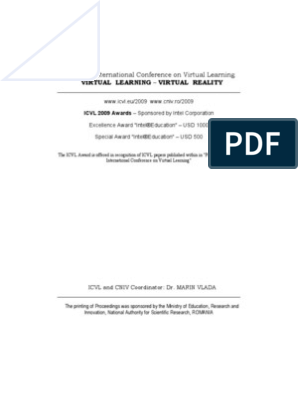TEACHING PROJECT
TEACHER:
DATE:
SCHOOL:
GRADE: 3rd A (2h/ week, Level: Starter.)
NUMBER OF STUDENTS: 18
CURRICULAR AREA: Language and communication
COURSEBOOK: Fairyland
UNIT: 6 – In the old house
TOPIC: Rooms of a house / household objects
LESSON’S TYPE: Mixt
LESSON’S LENGTH: 50’
SKILLS: Speaking, Listening, Writing, Reading
PROCEDURAL RESOURCES: conversation, explanation, exercises
AIDS: Flipchart sheets, pictures, worksheets, coloured cards
FORMS OF ORGANIZATION: frontal, individually, in groups
GENERAL COMPETENCES:
Oral expression in habitual communication situations
Receiving simple oral messages, in different situations of communication;
Writing simple messages in habitual communication situations;
Making interactions in the oral or written communication;
SPECIFIC COMPETENCES:
To identify the rooms of a house and the specific household objects for each;
To attend communication games in which to reproduce or create short messages;
To express curiosity for decoding some simple short messages;
To attend group projects in which to make correct associations between the rooms of the
house and the objects found in each.
LESSON’S AIMS:
To activate previous knowledge;
To introduce the new topic and make students interested in the new topic;
To develop students’ communicative ability to talk about the rooms in their home and
the things in their rooms;
To make students able to give simple, common information about a house;
To make students able to reproduce short and simple sentences about their houses;
To check students’ understanding ;
To practice the newly acquired structures.
ANTICIPATED PROBLEMS: If students do not understand the oral commands or tasks, the teacher
will translate them into Romanian.
1
� THE LESSON’S APPROACH
Time Stages Teacher’s activity Students’ activity Focus Interaction Aims
3’ 1.Checking T greets the students and checks The students answer the S T- Ss To get Ss attention.
attendance and attendance – “Are there any absents teacher’s questions. Ss- T
homework today?”. If there are, the T will note
them. Then the T will ask about the
homework (ex. 4/ page 43 from the
textbook) and choses a few students
randomly to read the sentences aloud
and their answers. Students make the
necessary corrections in their
notebooks.
5’ 2. Warm- up T shows the Ss a little paper house and Ss give answers to the teacher’s S T- Ss To create a relaxing and
asks them three questions: 1. questions Ss- T pleasant atmosphere and to
“What is this?” arouse students’ curiosity.
2. “Can you see inside?”
3. “What is a house formed from?’
2’ 3. Lead- in The T sticks a large flipchart sheet on Ss answer that those are rooms. S T- Ss To introduce the new topic
the board. On it the T has drown a Ss- T
sketch of a house. She shows Ss
different pictures of the different
rooms in a house and asks them “What
are all these?”.
1’ 4. Announcing The T writes the title of the new Ss pay write the title in their S T- Ss To make students interested
the new lesson lesson on the board: “ROOMS IN A notebooks. in the new topic;
and aims. HOUSE”.
She also explains them what are the
main aims for the new lesson.
10’ 5. “Rooms of a Further, the teacher shows some Ss listen to the instruction and S T- Ss To help Ss improve their
house quiz”- coloured cards to the class. Each offer as volunteers. Ss- T vocabulary;
teaching the new contains a question about the different They give their answers, stick To develop their
vocabulary rooms of a house. The T will ask the cards on the flipchart sheet, communication skills;
volunteers to answer the questions. As repeat the new words with the To help Ss make the
Ss answer, the T provides each word whole class and write them difference between the
in English- a coloured card containing down in their notebooks. rooms and their utility.
the word that the volunteer will stick
2
� on the flipchart sheet in the space
where he/ she thinks that room can be
situated. The Ss will also repeat the
new words loudly and will write them
in their notebooks.
15’ 6. Group work The T will divide the class into four Ss pay attention to the S T- Ss To help students see and
groups. Each group will receive a set instructions and complete the Ss- T understand the use and the
of flashcards containing different tasks. forming rules of Simple
objects specific to a certain room. Present in English;
They will have to quickly realise
which is the room in question and to To make students aware of
stick each image on the flipchart sheet, the difference in form
in the right room. The first group that between the 3rd person
finishes the task will receive a reward. singular and the rest of
them;
Then the teacher shows the class
flashcards containing the words in
English specific to each object and
asks them to match those with the
images on the flipchart.
The teacher will ask them to write
down any word they did not know.
10’ 7. Fixing the new Each student receives two worksheets- Ss resolve the requirements S T- Ss To check students’
information one that consolidates the rooms in a understanding
house and one that consolidated the
household objects specific to each
room. (Annex 1)
2’ 8. Feedback T shows Ss the “red box” that she has Ss receive coloured sheets and T T- Ss Getting a proper feed-back
on her desk. She gives each student draw the smiley or sad faces, Ss- T
little post-it sheets to draw a “smiley then put them in the red box.
face” if they liked the lesson or a “sad
face” if they did not like it, then put it
in the “red box”.
1’ 9. Assigning the T gives Ss a worksheet containing
homework different exercises the new vocabulary Ss receive the worksheet. S T- Ss
(Annex 2)

























































































